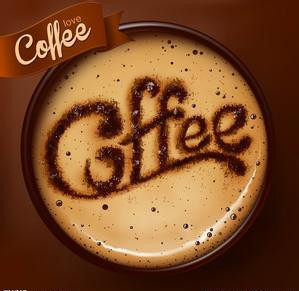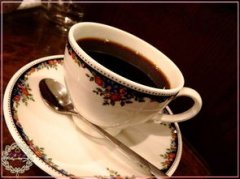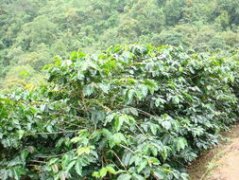Coffee Culture Coffee is the most popular in Vienna
Coffee is something that Viennese enjoy talking about and are quite proud of. The Viennese even compare it with music and waltz, which is called the "three treasures of Vienna", which shows the relationship between Viennese and coffee. Some people say that Vienna is "five steps and one coffee", which may be an exaggeration by the poet, but it is true that there are a large number of Vienna cafes. From the coffee kiosks around the corner for people to drink standing up, to the coffee shops gathered by students near the university, to the magnificent coffee shops next to the theatre and by the Imperial City, there are at least dozens, some of which open at 06:30 in the morning and do not close until 2 a.m. Therefore, it is not too much to say that the air of the "capital of music" is not only flowing with the rhythm of music, but also filled with the fragrance of coffee.

The history of Viennese drinking coffee can be traced back to the 17th century. At that time, there were many cafes in large and small cities in many Islamic countries, and coffee had become an indispensable part of people's lives. But in Europe, people still don't know what it is. In 1683, Turkey attacked Vienna for the second time, when the Austrian Emperor Augustus II signed a military alliance with King Augustus II of Poland. The fleeing Turkish army discarded large quantities of weapons, ammunition and hundreds of large pockets of mysterious brown beans on the battlefield around the walls of Vienna, and the victorious Viennese did not know what to do with them. As it happens, a Polish spy lurking in the Turkish army, Kohzki, once tasted a thick black drink made from this roasted bean in Constantinople. The Turks called it "Kahve", which is now coffee. As a reward, the Polish received all the coffee seized on the battlefield and opened the first coffee shop in the history of Vienna. Today, there are still many cafes that claim to be the first coffee shop opened by Poles to attract customers. But in the beginning, coffee shop business is not good, Viennese still prefer to drink tea. Later, the businessman changed the recipe and added milk to his coffee, which worked surprisingly well and became popular in the 1780s. People call it "Melange". To this day, although coffee is varied, it is still the most popular drink in Vienna.
Drinking coffee has become a part of life in Vienna. In a leisurely atmosphere, people can meet friends in cafes, play chess, read books, write books, read newspapers (usually provide newspapers from many countries), or watch TV in an inconspicuous corner as long as they pay for a cup of coffee. Some cafes have their own class of customers-the country, writers or politicians-while most cafes are packed with customers of all kinds. The most famous coffee shop in Vienna is the Central Cafe, which is located in the downtown area. Before World War I, it was a meeting place for famous poets, playwrights, artists, musicians and diplomats. Some people say that this is the cradle of many Austrian poems, plays and novels, which may be an exaggeration, but the music masters Mozart, Beethoven, Schubert, the Waltz Dynasty, Strauss and his son were all regulars here. Today's Central Cafe is doing brisk business, but no matter how crowded it is, guests can stay as long as they want. This is a century-old tradition of the Viennese Cafe. There are also many well-known cafes in Vienna, who always have a close relationship with past or present celebrities. Viennese like to tell visitors which artists and writers often meet in which cafe and which politicians like to meet journalists in which cafe. There are many kinds of Viennese coffee, from black coffee to various kinds of coffee with milk, each with its own characteristics, suitable for different tastes, and all have their own names. Therefore, walking into the Vienna Cafe, if you simply want a cup of coffee, the waiter will be at a loss, because there are at least 40 varieties of coffee. If you don't know much about coffee and want to experience the unique atmosphere of the Viennese Cafe, click on the "Melange" we mentioned earlier, this thick milk coffee is completely Viennese and has a lingering aftertaste. No matter what kind of coffee you want, you will get a cup of water at the same time-for no reason, just because the water in Vienna is so cool and delicious. But if the waiter brings the guest a second glass of water, he will signal, "you have stayed here too long."
Viennese love sweets, and they like to order a cup of coffee and add a delicate dessert at the same time. There are many desserts in Vienna, but people like Gugelhupf best when drinking coffee, which is a kind of hollow round egg roll peculiar to Vienna. The cafe's provision of newspapers, pictorials and magazines for readers is a major cultural feature of the Vienna Cafe, which also has historical origins. It is said that before coffee was widely accepted, many cafes in Vienna had to offer free newspapers to attract customers, because newspapers were very expensive at that time, and a newspaper cost twice as much as a cup of coffee. Of course, this hospitality function of newspapers no longer exists today, but it has been maintained and constitutes the cultural taste of the Viennese Cafe.
Important Notice :
前街咖啡 FrontStreet Coffee has moved to new addredd:
FrontStreet Coffee Address: 315,Donghua East Road,GuangZhou
Tel:020 38364473
- Prev

Boutique coffee culture Japanese coffee culture
The first coffee spread to Japan was Nagasaki in the Yuanlu period. And people officially accepted it from the Meiji era. Now let's take a look at the coffee history of Japan. At first, the Japanese were not used to the coffee shop opening one after another in Western Europe, when the literature and art of coffee culture were in full bloom, while Japan was in the strict lock-up policy of the Edo era.
- Next

The History and Culture of Harald Coffee
Harald (Harar) is 1600 meters above sea level, and the Harald Heights in eastern Ethiopia is one of the highest elevation areas for human coffee cultivation (some even claim to be as high as 2000 Murray 2,700 meters). Across the Gulf of Aden, overlooking the two ports of Moka and Aden in Yemen. For centuries, Harald coffee farmers carried coffee beans down the mountain with camels, donkeys or carriages, risking being besieged by hyenas.
Related
- How did the Salvadoran coffee industry develop in Central America?
- What exactly does the golden cup extraction of coffee mean?
- The Origin of Coffee flower
- [2023 Starbucks World Earth Day] there are more meaningful things besides free Starbucks coffee!
- What kind of coffee is there in Spain? 9 Flavors of Spanish Coffee
- Aromatic African coffee| Kenya's coffee culture and historical production area
- Liberica Coffee Bean knowledge: the characteristics of Liberian Coffee beans of the three original species of Coffee beans
- The origin and formula of Spanish latte introduces the taste characteristics of Bombon coffee in Valencia, Spain.
- How to adjust the solution of over-extracted coffee
- What is the tasting period of coffee beans? What is the period of coffee and beans? How should coffee wake up and raise beans?

